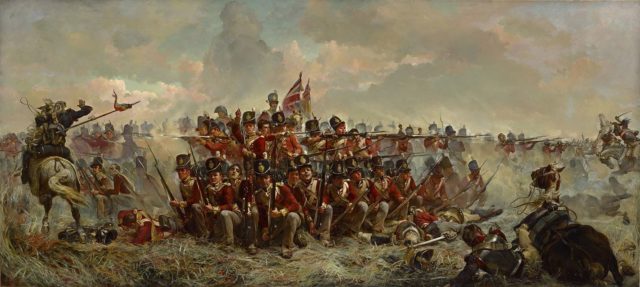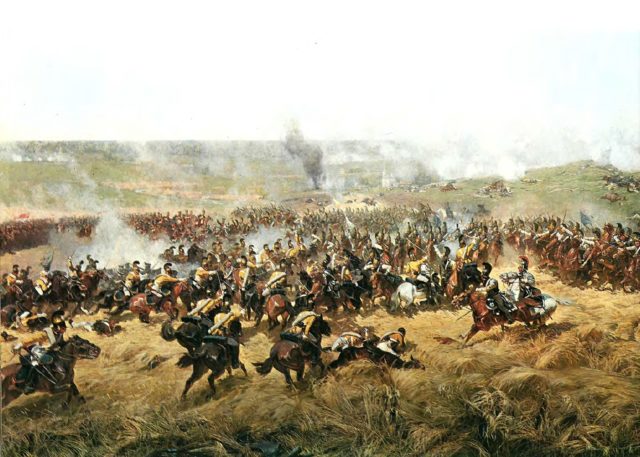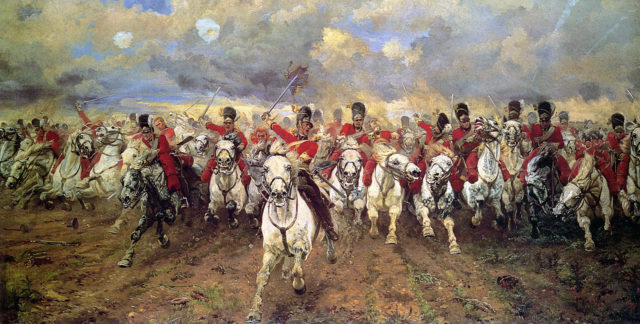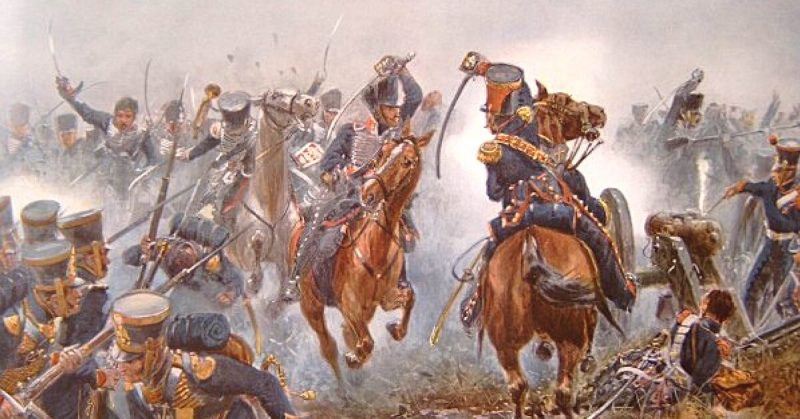The Napoleonic Wars involved staggering numbers of men injured and killed.
From 6% casualties at Fleurus in 1792 to 15% at Austerlitz in 1806. There were 31% at Eylau in 1807 and a terrifying 45% at Waterloo in 1815.
The sheer number of men broken by the wars was horrifying. Some survived their injuries, although it is likely millions died. The 3.7 million deaths estimated by historian Hippolyte Taine may be an exaggeration, but it must be in the right area.
Over 500,000 men were lost from Napoleon’s Army during the 1812 invasion of Russia, and while this was a particularly terrible disaster, it was not unique.
Why did so many people die in one man’s wars?
Wars that Engulfed a Continent
The scale of the casualties is partly a reflection of the extent of the wars.
Napoleon oversaw the continuation of an extended period of warfare begun by the revolutionary French governments. The destabilizing effect of the French Revolution had turned many great powers against France. While these conflicts could be regarded as a series of separate battles, they were effectively one long war in which France was constantly engaged in fighting.
As in the Seven Years War before it, these were a precursor of the 20th century World Wars, drawing in all the great powers. They were referred to as the Great War a century before that term was used in the 1914-18 conflict. Wars fought almost entirely in Europe can hardly be called world wars, but they did include the greatest industrial powers of the day and involved nearly every country in Europe.
With so many armies fighting, there were a lot of lives at stake.

Conscription
Revolutionary France introduced a new element to European warfare. It was something which would increase the number of soldiers in the field many times over; conscription.
Faced with attacks from countries across Europe, rebellions from within, and the challenge of spreading its ideals by force, revolutionary France started conscripting men to fight.
The conscription law in place for most of Napoleon’s reign was the Jourdan-Delbrel Law of 1798. Its core provisions lasted until the codification and overhaul of all military regulations in 1811. Even then, the essence of the law was incorporated into regulations, not abandoned.
Conscription meant that France threw vast numbers of men into the grinder of war. Not just people from her own country, but conscripts from conquered provinces as well. Opposing nations recruited to match France’s numbers. Not only were a large number of countries fighting, but each one was fighting with greater numbers of men, thereby inflicting and suffering more casualties.
Epic Disasters
Napoleon was a bold and audacious general. He took huge risks to achieve major goals. As a result, when disaster fell it could be equally epic.
The retreat from Moscow in 1812 and defeat at Leipzig in 1813 were particularly devastating, with large numbers of French troops lost. The men who replaced them were fielded in a rush, meaning many were inexperienced and ill-prepared, likely to suffer when faced with the reality of battle.
Even before this, Napoleon’s grand schemes were sometimes his undoing. The Egyptian expedition of 1798 saw thousands of men dying not only in battle but from plague and deprivation, as they were cut off and supplies ran out.
Napoleon aimed high. When he fell to earth, others suffered.

Improved Artillery
Excessive pride may have played a part in the devastation, but so did technology and the march of progress.
Napoleon’s career began in the artillery at a time when it was making significant advances. Guns were being designed to be extra powerful and more mobile. Due to a combination of technological developments and the tactical changes Napoleon led, artillery came to play a more destructive role than ever before. The French Army at Leipzig fired five times as many cannon balls as they had at Valmy twenty-one years before. The results of those cannons were more bodies in a brutal count.

Limits of Medicine
Although it was not a new problem, limited medical knowledge exacerbated the toll taken by the Napoleonic Wars.
The 19th century was a period of significant medical advances. The nature of disease would come to be understood. The importance of cleanliness in preventing infection would transform both treatment and public health. Chemists would develop powerful detergents to kill bacteria before they reached wounds and surgery would take bold leaps forward.
All that lay ahead, however. During the two decades in which Napoleon dominated war, even the slightest of battlefield wounds could lead to a deadly infection. A broken arm or leg would most likely be removed, increasing the risk of infection, blood loss, or death from shock.
It was a war on an almost industrial scale, without the benefits modern medicine would bring.
Foraging and Scorched Earth
Most attempts to count the cost of Napoleon’s Wars have focused on the soldiers, but the violence also had an enormous impact on civilians.
As vast armies trampled across the continent, they left a trail of destruction in their wake. Some of this was due to a lack of food. Carrying all the sustenance required for such grand armies would have been a tremendous effort, so the armies lived off the land. Farms and entire communities were left without food.
It was worse in areas where scorched earth tactics were used, notably Russia. To prevent the French obtaining supplies, Russian Armies devastated their country. The city of Moscow was set ablaze rather than let the French find what they needed there.
Such tactics caused starvation and death for ordinary people. Disputes with foraging soldiers led to acts of violence. Inevitably, such suffering went largely unreported.
Millions of soldiers and civilians died during the Napoleonic Wars. The political and technological changes made for a particularly devastating conflict. It was a harbinger of what was to come in the age of total war.
Source:
Geoffrey Ellis (1991), The Napoleonic Empire.
Alan Forrest (2011), Napoleon.
Robert Harvey (2006), The War of Wars: The Epic Struggle Between Britain and France: 1789-1815.
